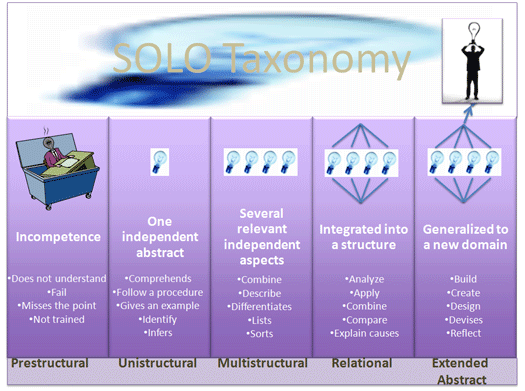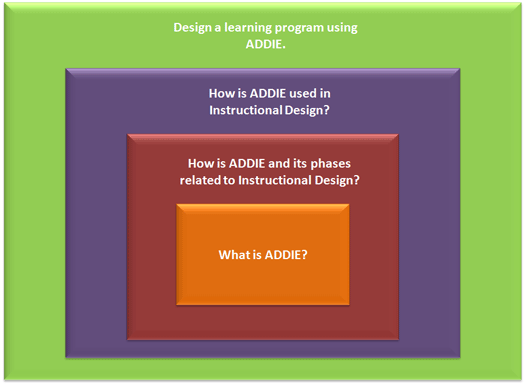Alternative to Bloom: Structure of Observed Learning Outcome (SOLO) Taxonomy
While Bloom's Taxonomy has been quite useful in that it has extended learning from simply remembering to more complex cognitive structures, such as analyzing and evaluating, newer models have come along. However, it has become more useful with the revised taxonomy.
One model that might prove more useful is the Structure of Observed Learning Outcome (SOLO) taxonomy. It is a model that describes levels of increasing complexity in a learner's understanding of subjects (Biggs, Collis, 1982). It aids both trainers and learners in understanding the learning process. The model consists of five levels in the order of understanding:
-
Pre-structural - The learner doesn't understood the lesson and uses a much too simple means of going about it—the learner is unsure about the lesson or subject.
-
Uni-structural - The learner's response only focuses on one relevant aspect—the learner has only a basic concept about the subject.
-
Multi-structural - The learner's response focuses on several relevant aspects but they are treated independently—the learner has several concepts about the subject but they are disconnected. Assessment of this level is primarily quantitative.
-
Relational - The different aspects have become integrated into a coherent whole—the learner has mastered the complexity of the subject by being able to join all the parts together. This level is what is normally meant by an adequate understanding of a subject.
-
Extended abstract - The previous integrated whole may be conceptualized at a higher level of abstraction and generalized to a new topic or area—the learner is now able to create new ideas based on her mastery of the subject.

SOLO not only shows the instructors how the learners are progressing, but also the learners themselves. It does this by putting the processes in squares. You start in the center square (Uni-structural) and work outwards (Multi-structural, Relational, and finally Extended Abstract).
The example below shows the concept of ADDIE and how it starts with learning facts and ends with being able to create a learning process or training using ADDIE:

Next Steps
-
Learning Strategies: Using Bloom's Taxonomy
Reference
Biggs, J.B. and Collis, K. (1982). Evaluating the Quality of Learning: the SOLO taxonomy. New York, Academic Press
